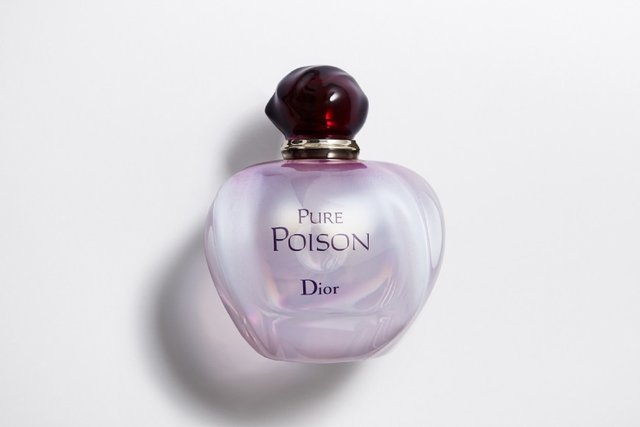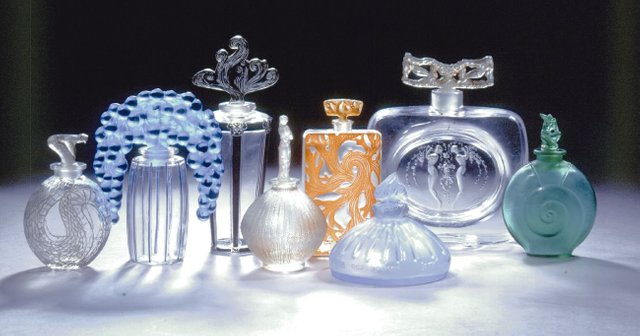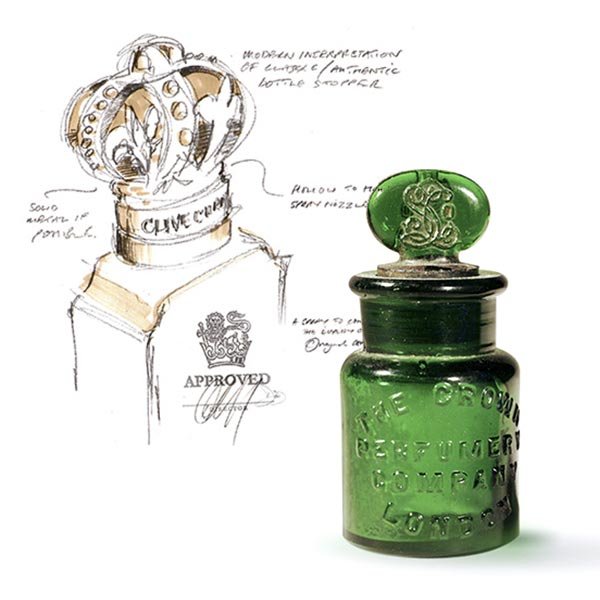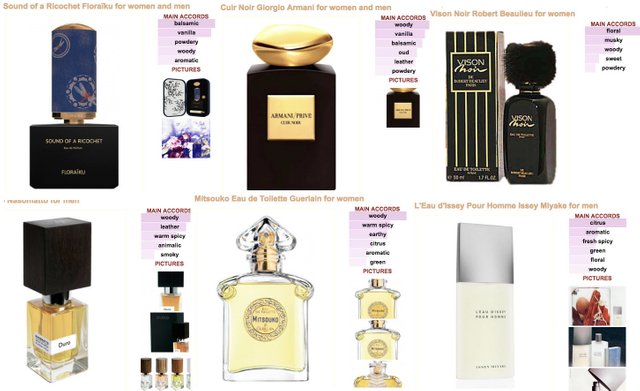The Magic World Of Perfumes
‘’To smoke through’’ or in Latin "per" and ‘’fumum’’ is a description of the ancient way of using the perfume – plant extracted oils are burned to provide an environment with pleasant smelling smoke.
First used as an offer to gods, then royals only, and then for common people, but only on special occasions like birthdays or Christmas. Nowadays almost everyone can afford to enjoy a nice perfume, but in case one can not never go for a cheap one. Perfume is very personal. It can depict character in a way no other item can. Clothing, even shoes can be cheap, but perfume never.
The French are the greatest fans spending more than 2 billion eur each year, and when you are in the streets of Paris you can easily indulge in vivid fragrances of passers-by. It is a personal signature, and obsolete belief that their poor hygienic habits made them do this is just that - obsolete 17.ct 'technique' invented due to the paranoia of deadly diseases allegedly transmitted through water.
Science behind the scent
Perfumery is both art and science (like any good design?). An amateur can make an attractive scent, but it takes time and research for the olfactory system to develop and then to connect unexpected pieces of olfactory information in a splendid composition. Although there is no single technique for perfume making, there are general guidelines on concept development. And there are schools where the talented ‘noses’ are trained, one of them is French 'Givaudan'.
A perfume designer is sometimes referred to as "Nez" (French for nose) and all of them have a unique style. Works of Nathalie Lorson, Jacques Cavallier, Antoine Lie and Mane are worth checking.
Another fascinating thing about scent is that even faster than visual or auditory information goes directly to the limbic system - in evolutionary terms the oldest one and responsible for emotion, motoric activities and primitive drives. Because it is so emotionally charged, the scent is exploited in profit-making in a way that the smell of a brand new car may not be exactly what you think it is, it can just as well be an industrially produced fragrance.

Image source: dior.com
30ml of poisonously addictive perfume created in 2004. by Benaim, Ropion and Polge. I almost came to the bottom of the bottle in just one day.
History
Modern perfumery was born in the late 19th century with the invention of synthetic ingredients and the rise of cosmetic houses Coty and Guerlain.
Guerlain had one of the most beautiful works in perfumery and Coty employed a glass artist René Lalique to make sculpted perfume bottles. Coty was also the first to allow women to sample fragrances before buying them.

Image source: fragrantica.com
‘Give a woman the best product to be made, market it in the perfect flask, beautiful in its simplicity yet impeccable in its taste, ask a reasonable price for it – and you will witness the birth of a business the size of which the world has never seen.’ said Coty.
And then there was a wildly successful Paul Poiret who incorporated designed fragrances in womenswear, naming it Parfums de Rosine whose bottle was designed by Erté, Raoul Dufy and Paul Iribe. Mademoiselle Coco struck with her No.5, most iconic perfume of all times and among other 1920’s successes were Lanvin’s fragrance Arpège, and Guerlain’s wonder Shalimar.
The fragrances at the time were asexual and by the mid 20th ct. a clear division is made between man’s and woman’s perfume.
Classification
Esprit de Parfum, Eau de Parfum, Parfum de Toilette, Eau de toilette, Eau de Cologne, Perfume mist... These terms are used to describe a concentration by percent/volume of perfume oil. The higher the percentage of essential oil, the longer lasting fragrance it is.
Analogue to music, there are notes in the fragrances. Top, middle and base notes or "notes de tete", "notes de coeur" and "notes de fond".
Each of these notes needs time to unfold - higher ones unfold immediately and fixatives or the base notes are usually not perceived until 30 minutes after application. These notes are created carefully with knowledge of the evaporation process of the perfume.
There are perfume categories or families or genres if you like, classified by ingredients used. These are:
• FLORAL - Flower by Kenzo
• GREEN - grass, green leaf and cucumber-like (Chanel No. 19)
• CITRUS - mainly eau de colognes
• ORIENTAL or AMBERED – animalic scents of ambergris, vanilla, tonka bean, flowers and woods (Shalimar, Opium)
• CHYPRE - bergamot, oakmoss, patchouli and labdanum (Guerlain's Mitsouko)
• ADELHYDIC – Chanel No. 5
• WOOD - woody scents, sandalwood, cedarwood (Balenciaga Rumba)
• LEATHER - honey, tobacco, wood (Balmain's Jolie Madame)
• FOUGERE - a base of lavender, coumarin and oakmoss (Guy Laroche Drakkar Noir)
• AQUATIC - very clean, modern smell (Christian Dior's Dune)
• FRUITY - aromas of fruits, peach, mango, passion fruit (Ginestet Botrytis)
• GOURMAND - perfumes you want to eat with notes like vanilla, tonka bean, synthetic components of food flavors (Thierry Mugler's Angel)

Image source: https://www.theinvisiblestories.com
Fragrance wheel
Fargeon, a personal perfumer of queen Marie Antoinette created ‘Sillage de la Reine’ made from tuberose, jasmine, orange blossom, sandalwood, iris and cedar and ‘Jardin Secret’ made from bergamot, cardamom, jasmine, incense, rose, sandalwood, vanilla, patchouli, amber and tonka bean to please the queen.

Image source: clivechristian.com
Clive Christian: Vanilla is the second most expensive spice in the world, and vanilla pods can only be harvested by hand one day of the year. These perfumes count for world’s finest and world’s most expensive ones.
Storage
Osmothèque is a scent library and a museum based in Versailles. Perfumes are kept in argon evacuated aluminium flasks at 12 degrees Celsius. According to that it is best to keep them out of light and in a relatively low temperature. No more bathroom or vanity table perfume expos :(

Image source: fragrantica.com
I am a big fan of strong musky and woody and fresh notes. This is a wish list of perfumes I can't wait to try. What is yours?
Congratulations @katarinabar! You received a personal award!
Click here to view your Board
What a fabulous piece! Thank you for this treat. And obviously much love and care went into your presentation, as well. You mentioned, of course, Guerlain, and reminded me of my favorite perfume, Shalimar, which puts a smile on my face. It also occurs to me that you would truly enjoy Diane Ackerman's book, A Natural History of the Senses.
The Magic World of Perfumes is a fascinating and complex topic that has been appreciated by people for centuries. This article on neotericlifestyle provides an insightful overview of the history, culture, and art of perfumery. It offers a glimpse into the world of fragrances, exploring the different types of perfumes and how they are created. One valuable piece of advice that I would offer to those interested in the world of perfumes is to take the time to explore and experiment with different scents. Everyone's olfactory preferences are unique, so what smells good to one person may not necessarily appeal to another. Therefore, it's important to try a variety of scents and identify which ones you enjoy the most. Additionally, understanding the different types of perfumes and their compositions can help you make informed decisions when choosing a fragrance that is right for you.